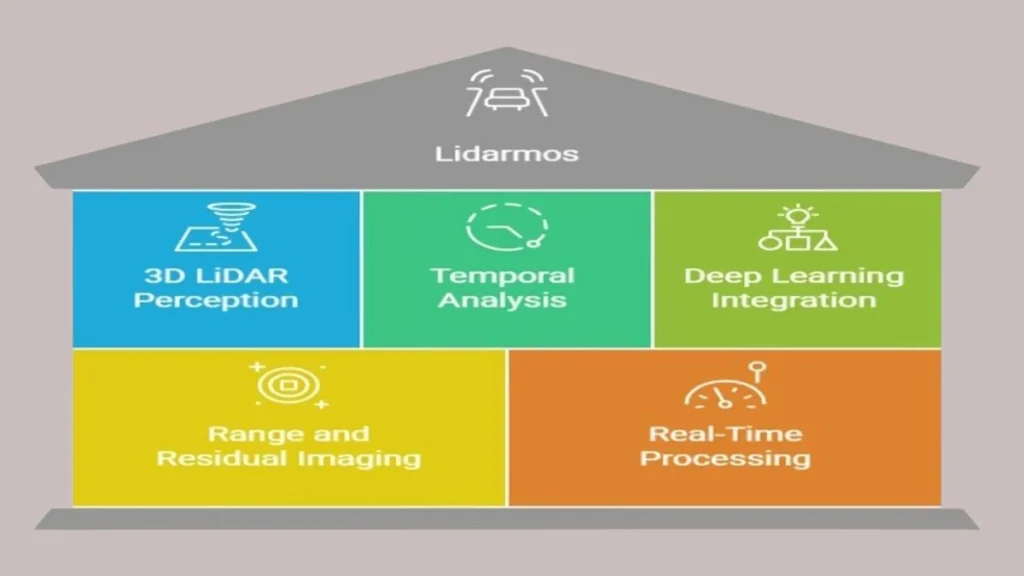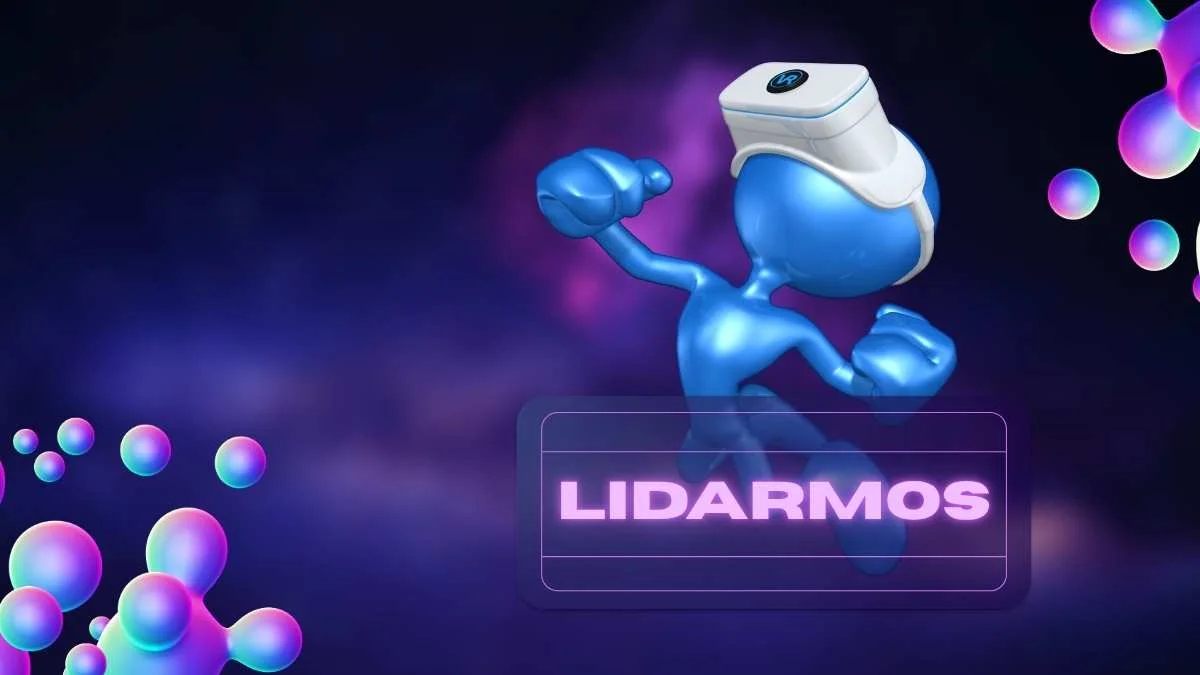Lidarmos, a stylized abbreviation of LiDAR-MOS (LiDAR-based Moving Object Segmentation), represents a transformative approach to environmental perception in autonomous driving, robotics, and advanced mapping technologies. Rooted in cutting-edge 3D LiDAR data processing and deep learning techniques, Lidarmos distinguishes itself by accurately identifying dynamic objects—such as vehicles, pedestrians, and cyclists—amidst a backdrop of static structures like roads, buildings, and natural terrain.
What is Lidarmos?
Lidarmos is an advanced computational method that enhances the machine’s understanding of its environment by differentiating moving objects from stationary ones using sequential LiDAR scans. These scans, rich with spatial information, are transformed into range and residual images, which are then analyzed using deep learning algorithms.
Unlike traditional perception systems that rely solely on cameras or radar, Lidarmos leverages the high-resolution 3D data from LiDAR sensors, allowing for more precise object segmentation. By understanding temporal changes in the environment—how objects move over time—it provides a motion-aware perception layer crucial for autonomous vehicles and robotics platforms.
Key Features of Lidarmos
It exemplifies technical excellence and engineering innovation in motion segmentation. Below are its core features, each contributing to its real-time performance and reliability:
1. 3D LiDAR-Based Perception
LiDAR technology emits laser beams to map surroundings in three dimensions. Lidarmos processes these point clouds to capture accurate spatial geometry, which is crucial for identifying object boundaries and movement patterns.
2. Temporal Analysis of Sequential Scans
By comparing consecutive LiDAR scans, Lidarmos identifies movement over time, isolating dynamic elements. This temporal approach ensures higher accuracy in distinguishing between truly moving objects and those merely changing due to sensor noise or perspective.
3. Deep Learning Integration
It utilizes convolutional neural networks (CNNs) and recurrent models to learn motion patterns from labeled datasets. These models excel at recognizing subtle variations in LiDAR data, allowing for robust classification of moving versus static objects.

4. Range and Residual Imaging
LiDAR scans are transformed into range images, capturing distance information, and residual images, highlighting temporal differences. This dual-image approach boosts segmentation accuracy by focusing on both spatial and temporal cues.
5. Real-Time Processing Capability
One of Lidarmos’ standout features is its ability to operate in real-time, a necessity for applications like autonomous navigation. Through efficient model architectures and GPU acceleration, Lidarmos delivers high-speed performance without sacrificing precision.
Applications of Lidarmos in Modern Technology
The capability of real-time motion perception and processing the data available to Lidarmos has made it to become a core in many industries at the front lines of progress:
Autonomous Vehicles
Dynamic perceptions of road users are fundamentally important to the safety in autonomous driving. It enables vehicles to detect and respond to moving objects in the path such as cars switching lanes or pedestrians crossing thereby improving their decision and path optimization.
Robotic and industrial automation
In case of dynamic surroundings with robots, objects identification regarding what is stationary and what is moving enables an efficient completion of its task and collision-free travel. Lidarmos assists with the autonomous drones, delivery robots, and industrial arms that move within sophisticated dynamic environments.
SLAM (Simultaneous Localization and Mapping) 3D Mapping
Motions of the objects being mapped do not create accurate maps, they can yield some noise and causes variation. Removal of these dynamic factors would increase the precision in the mapping and is used to provide clean and static maps, which Lidarmos would be based on to perform reliable SLAM operations.
Security and Watch-keeping
When applied to security situations, the possible application of Lidarmos involves the real-time motion detection in diverse environments low-light conditions or crowded ones. Its LiDAR-centric solution is more accurate in most setups than other camera-based systems and provides resilient and robust tracking of objects.
Evolution: From Lidarmos to MambaMOS and HeLiMOS
The introduction of Lidarmos spurred the development of more advanced models aimed at improving segmentation quality and computational efficiency.
MambaMOS
MambaMOS enhances Lidarmos by integrating multi-sensor fusion, combining LiDAR with camera data. This model addresses limitations in challenging weather conditions or environments where LiDAR data alone may be insufficient.
HeLiMOS
HeLiMOS (Hierarchical LiDAR-MOS) introduces multi-scale processing for better segmentation of small or partially occluded objects. This hierarchical method improves overall segmentation fidelity and generalizes well across diverse driving environments.
These advancements build on the robust foundation provided by Lidarmos, pushing the envelope in autonomous perception research.
Technical Challenges and Innovations
Despite its advancements, Lidarmos faces several challenges, which ongoing research continues to address:
- Data Sparsity and Occlusion: LiDAR data may be sparse and especially at long distance, objects may be only partially visible. These problems are alleviated by using deep upsampling methods and context-sensitive neural networks.
- Real-Time Constraints: It is computationally demanding to process huge LiDAR data in real-time. Other advances are model compression, hardware acceleration, and efficient data pipelines which allow it to be deployed on resource-constrained environments.
- Environmental Generalization: Given the variety of geographies, weather conditions and sensor configuration that Lidarmos models have to operate under, the models must be reliable within all of these operating conditions. Domain adaptation and transfer learning methods are being investigated in order to make the models more robust.
Conclusion
Lidarmos is a key element to the future of 3D motion-aware perception, which is changing the way autonomous systems perceive and act with the world around them. Its usage extends to autonomous driving, robotics, urban mapping and security and serves as a potent solution to real-time and intelligent decision making at large.
With the evolving technology, Lidarmos and its second or third-generation successors will continue to be the lynchpin when it comes to developing safe, efficient, and intelligent autonomous systems, laying new parameters in the way in which machines learn to interpret dynamic worlds around them.

James Whitaker brings a wealth of knowledge and creativity to content writing across various niches such as health, technology, personal finance, and digital marketing. Known for his ability to simplify complex topics and deliver audience-centric content, he helps brands build authority and trust.

